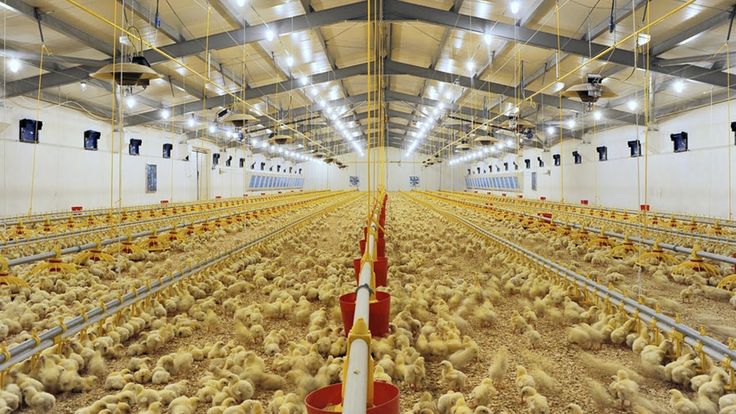Poultry House Lighting: Red/blue Light for Chicken Coop

Directory:
1. Blue Light for Chicken Coop
2. Green Light for Chicken Coop
3. Red Light for Chicken Coop
4. Near-Ultraviolet Light for Chicken Coop
In contemporary poultry breeding, the poultry house lighting goes beyond merely illuminating the space; it plays a crucial role in influencing the growth, reproduction, and overall health of the poultry. Various light colors can have distinct effects on the physiology and behavior of poultry, which in turn affects breeding efficiency and economic returns. This article will examine how the color of lighting in poultry houses impacts breeding practices and will offer both theoretical insights and practical advice for scientific breeding methods.
The production efficiency of poultry is influenced by several factors, including breed and environmental conditions, with light, temperature, and feed being the most significant for growth and reproduction. Light plays a crucial role in chicken farming, as appropriate lighting can enhance production performance and positively affect the health and immunity of the poultry.
Different light wavelengths penetrate differently and interact with various receptors in the poultry brain, impacting sexual maturity, production performance, egg quality, daily behaviors, and physiological rhythms. Poultry responds to four primary wavelength peaks between 350 and 750 nanometers: near-ultraviolet, blue, green, and red light.
1. Blue Light for Chicken Coop
The blue light spectrum can lower blood pressure, naturally calm chickens, and elevate plasma androgen levels. It also improves feed conversion rates, reduces costs per unit weight, and increases overall fresh weight. Additionally, blue and green light can enhance muscle growth and testosterone production.
2. Green Light for Chicken Coop
The green light spectrum boosts early growth rates by promoting the proliferation of skeletal muscle satellite cells and aids in calcium absorption, which is beneficial for eggshell development.
3. Red Light for Chicken Coop
Red light, with its longer wavelengths, penetrates the hypothalamus and pineal glands more effectively, making it more stimulating than blue or green light. It encourages poultry activity, increases exercise and food intake, promotes sexual maturity, and can lead to more aggressive behavior. Red light is vital for stimulating sexual maturity and egg production, helping to reduce feed consumption during laying periods and extending the duration of egg-laying.
4. Near-Ultraviolet Light for Chicken Coop
Near-ultraviolet light enhances poultry's ability to recognize food and other birds, has disinfecting properties that can reduce parasites, and promotes farm hygiene. It also supports poultry health by stimulating the production of vitamin D, which is essential for calcium binding in bones and eggshells.
While poultry responds to these four light color peaks, a continuous spectrum provides a more balanced effect. LED white light is the fundamental spectrum suitable for poultry breeding, with its influence typically assessed by the color temperature of the white light. Cold white light sources can promote rest and comfort, enhance breast muscle volume, and support weight gain, while warm white light sources encourage feeding and increase activity, making them more suitable for laying hens. Since LED lights are cold light sources with a continuous spectrum, they outperform other lighting types. A combination of "white light + monochromatic light" can significantly enhance feeding efficiency. By creating an appropriate light spectrum, it is possible to improve feed conversion rates, decrease feed consumption, and increase body weight.